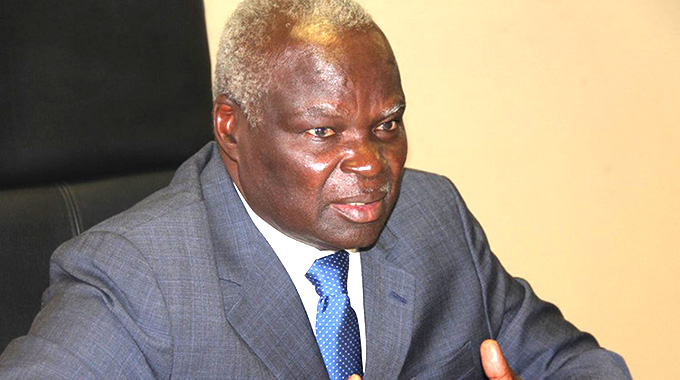EDITORIAL COMMENT: Complacency of public over Covid-19 a danger

The fourth wave of Covid-19 infection sweeping Europe holds a lot of lessons for the rest of the world in general and so obviously for Zimbabwe, although the great care taken by the Zimbabwean Government in how lockdowns are relaxed should help us, so long as existing rules are enforced.
The World Health Organisation has pinpointed Europe as the epicentre of the fourth wave, accounting for two thirds of new infections over the past week, so the lessons on required vaccination percentages and what public health measures must be in place have relevance everywhere.
The biggest measures now being pushed are that vaccination rates need to be far higher than the 60 percent to 70 percent once thought adequate, that third doses might be required after a year, and that public health measures need to be reintroduced or enforced, in particular masking and banning the unvaccinated from social gatherings and preferably from workplaces.
Most European countries, and especially Western European countries where vaccination rates are the highest, threw open the doors to relaxation of public health measures as the third wave, the first involving the Delta variant, retreated and vaccination rates climbed above 60 percent of the total population.
Generally speaking, the insistence on mask wearing was either dropped or no longer enforced. A lot of social distancing rules were dropped, with bars, gyms, restaurants and sports events opened to all, or if there were still rules that required people to prove they were vaccinated before participating these were not enforced.
Of all places, Germany seems to be the hardest hit. With 67 percent of the adult population fully vaccinated, which once children have been factored in would be not far below 60 percent of the total population, Germans thought they were safe.
They were not and German experts are calling the fourth wave the worst so far with almost 40 000 new cases on Friday last week alone. The pools of infection are, admittedly, in the states with the lowest vaccination rates and the political dimension is that these are the states with the highest percentage votes for a right-wing party, one that is never included in coalition talks, that tends to embrace many who follow conspiracy theories.
France, with far lower infection rates and higher vaccination rates, has bluntly stated that there was an over-reliance on vaccination and inadequate other public health measures, in particular the need to maintain public masking and far more control over social distancing.
The two European countries least affected by the fourth wave, Spain and Portugal, took vaccination really seriously with vaccination rates well over 80 percent, and the warmer climate has also helped, with more windows left open for a start.
Italy was almost as fortunate, again with high vaccination rates and a warmer climate, but has seen a large blip in infection, partly caused by a huge demonstration of the unvaccinated in Trieste protesting against a vaccination mandate in workplaces, that is if you are not vaccinated stay at home.
As a result quite a few of the demonstrators and their friends are now sick. The general movement of European responses to the fourth wave is four-fold. First, complacency must be eliminated. Covid-19 is around and cannot be regarded as defeated.
Secondly vaccination rates must be pushed until almost all adults have had both shots and as each vaccine is found safe for ever-younger children as many children as possible.
Several countries are now pressing with third shots, basically for those who were in the earliest groups to be vaccinated late last year.
Thirdly public health measures need to be reintroduced and enforced. This includes public masking, with health experts saying this alone with the vaccination drive will save several hundred thousand lives.
Traditional Christmas parades are being cancelled in the worst hit towns of the Netherlands and rules that only the vaccinated can be allowed into bars, gyms and sporting events are becoming more general with enforcement ratcheted up.
The fourth measure is a vaccination mandate at all work places, that you have to be fully vaccinated before you can go to work. This is being coupled with growing pressure for a lockdown for the unvaccinated, that those who refuse to have their shots must stay at home except to buy food or see a doctor.
Those somewhat critical of President Mnangagwa’s fortnightly extensions of the level two lockdown since the third wave was beaten back, with relaxations in the social sphere only for the fully vaccinated and the instruction that all public sector workers must be vaccinated, will now notice that much of what Zimbabweans are supposed to be doing is precisely what European health authorities want put back in that continent.
But the Zimbabwean public has large areas of complacency, with a fair percentage not following the rules, as can be seen by the growing number of masks worn around the neck instead of on the face, and the fact that just about anyone can eat in most restaurants or drink in most bars without showing their vaccination cards. Enforcement is lax now.
Vaccination rates are still low although last week suddenly did start rising, but only to 148 345 jabs, which is a vast improvement on the 108 637 the previous week and the first week since August that the weekly total did rise. But they still need to rise a lot faster.
We can manage at least three times as many each week. And in all probability we will need to go above the initial estimate of 60 percent of the population to gain a high level of herd immunity, although that can be argued as we approach that figure.
With only 17,95 percent of the population fully vaccinated so far we have a long way to go before are even close to the original estimate.
One shining exception to vaccination complacency comes from the public sector where around 99,9 percent of staff are now fully vaccinated.
Provincial percentages ranging from 99,57 percent in Midlands, the only province without an international border or international airport, to 99,96 percent in Mashonaland Central strongly suggest that the ultimatum to get fully vaccinated by year end or find someone else to pay your January salary overcame a lot of resistance.
Presumably the last 300 or so public sector workers without both shots will be protected by year end, and even then most of those are probably only waiting for the second shot.
So this vaccination mandate is possible and more in the private sector need to follow the Government lead.
Some have done that already to make sure they are not crippled by an outbreak.
There was a small rise in infection rates last week, with the daily average going up from 31 to 37 and the weekly total of deaths rising from eight to 11. This is probably not the signal of an imminent fourth wave, but is a sign of complacency, and that complacency appears to be the greatest danger facing Zimbabwe.
Everyone needs to follow the public health rules and get vaccinated. The combination is what is required.









Comments